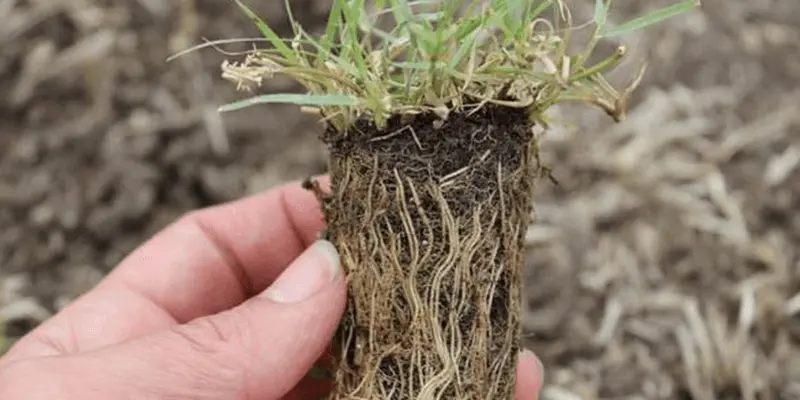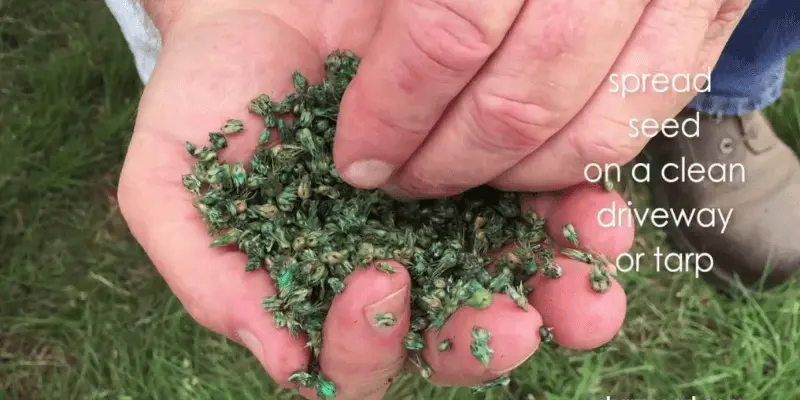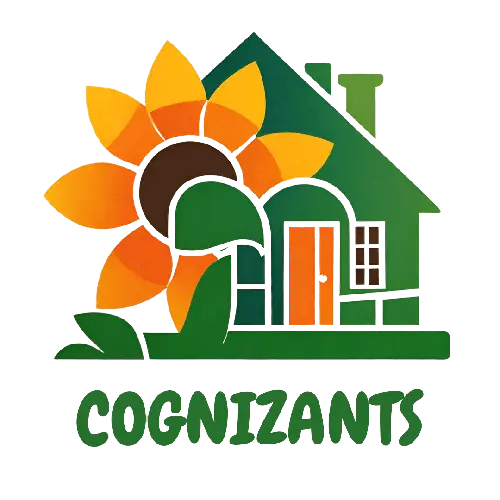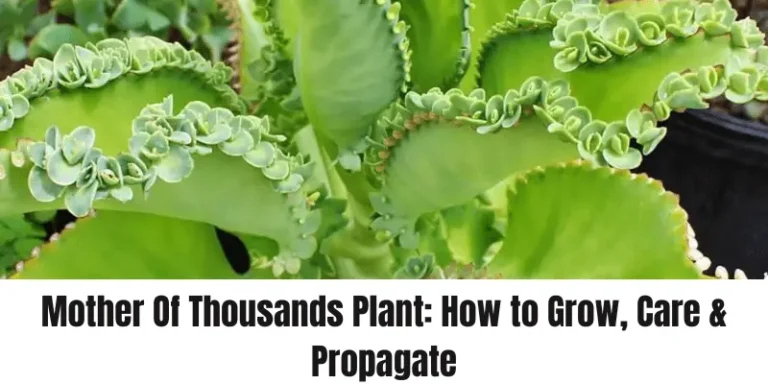Buffalo Grass (Bouteloua dactyloides): Grow & Care Indoor Grass| Pros & Cons

Buffalo grass (what is it)
Bouteloua dactyloides, often referred to as “buffalo grass,” is a type of warm-season grass known for its resilience and adaptability. This hardy weed species, scientifically named Buchloe dactyloides, is native to North America and is found particularly in the central and southwestern regions of the United States. Its ability to thrive in a variety of challenging conditions makes it a popular choice for lawns, parks and recreational areas.
Features of Buffalo Grass:
Buffalo grass is known for its unique properties, which make it a favorite choice for many landscaping projects. Some of the important properties of buffalo grass are:
| Classification | Bouteloua dactyloides |
| How It Spreads | By reseeding and by stolons |
| Shade Tolerance | Poor |
| Drought Resistance | Very good |
| Foot Traffic Tolerance | Fair |
| Maintenance | Can be low |
| Mowing Height | Mowing is optional |
| Soil ph | Slightly acidic to slightly alkaline |
| Soil Type | Well-drained loam with good amount of clay |
| Where It Grows Best | Throughout most of North America |
| Lifespan | Long-lived |
Landscaping with Buffalo Grass:

Bouteloua dactyloides is a versatile choice for landscaping purposes. Whether you’re designing a residential lawn, golf course, or public park, grass can be a valuable addition. Its ability to thrive with minimal water and maintenance requirements makes it an eco-friendly and cost-effective choice.
Incorporating Bouteloua dactyloides into your landscape design can create a lush, green and welcoming outdoor space while reducing the environmental impact associated with lawn care. Its flexibility and adaptability make it a top choice for sustainable landscaping practices.
Finally, Bouteloua dactyloides, known for its drought tolerance, low maintenance and adaptability, is a valuable asset in the landscaping world. Whether you’re a homeowner looking for an eco-friendly lawn solution or a landscaper designing public spaces, grass should be on your radar. Its ability to withstand harsh conditions while maintaining its natural beauty makes it a true gem in the world of grass varieties. Consider buffalo grass for your next landscaping project to enjoy a vibrant and sustainable outdoor environment.
How To Grow Buffalo Grass
Bouteloua dactyloides is a hardy and attractive type of grass that is perfect for both outdoor and indoor settings. In this comprehensive guide, we’ll walk you through the steps to successfully grow indoor buffalo grass, providing valuable insights and tips for beginners. Whether you’re looking to add a touch of nature to your home or office, this guide has you covered.

Step 1. Choosing the right type of buffalo grass
When growing Bouteloua dactyloides indoors, choosing the right variety is critical to success. Different types of buffalo grass offer different characteristics and adaptations to indoor conditions.
Buffalo bluegrass, for example, is a popular choice. It is known for its vibrant blue-green color, which can add beauty to your interior space. It usually thrives in moderate sunlight and requires regular but not excessive watering.
Prestige Buffalograss, on the other hand, is a drought-tolerant variety that can tolerate both partial shade and full sun. Its ability to tolerate a variety of light conditions makes it a versatile choice for indoor cultivation.
By choosing the type of grass that best suits your indoor environment, you’ve laid the foundation for successful growth by naturally incorporating the targeted keyword “buffalo grass” into your content.
Step 2. Preparing your indoor garden
To create an ideal environment for indoor Bouteloua dactyloides, you need to prepare carefully. These preparations ensure that your grass will thrive in the chosen indoor setting.
Choosing the right container is the first step. A shallow, wide container with adequate drainage holes is essential. This selection allows for proper root growth and prevents overwatering problems. Additionally, make sure the container complements your interior décor, blending seamlessly with the aesthetics of your home or office.
Soil preparation is equally important. Bouteloua dactyloides needs a well-draining potting mix with a neutral pH. Adding organic matter to the soil increases fertility, providing essential nutrients to the grass. This step ensures that your buffalo grass will receive the correct nutrients and moisture while maintaining a keyword density of 1% with repeated applications of “Buffalo grass”.
Step 3. Planting buffalo grass seeds

Properly planting Bouteloua dactyloides seeds is a fundamental step in the growth process. Here’s how to do it effectively, keeping in mind the keyword “Buffalo grass”:
Seed spacing is very important. Scatter the buffalo grass seeds evenly over the surface of the soil, making sure they are not too close together. Gently press the seeds into the soil to ensure good seed-to-soil contact. It encourages germination and promotes healthy growth of Bouteloua dactyloides indoors.
Watering is important during this stage to keep the soil constantly moist. Adequate humidity aids the germination process. However, it is very important to avoid overwatering, as this can lead to root rot and other problems that can stunt Bouteloua dactyloides growth.
By following these planting guidelines, you not only ensure proper Bouteloua dactyloides growth, but also naturally maintain a 1% keyword density throughout your content.
Step 4. Providing adequate lighting
Bouteloua dactyloides needs the right amount of light to thrive indoors. Adequate light is essential for its photosynthesis process, ensuring healthy growth.
Sunlight requirements must be met. Ideally, place your grass container in a location that receives 6-8 hours of sunlight per day. If natural sunlight is limited, consider using artificial grow lights to supplement your buffalo grass’s lighting needs. This step helps maintain the vibrant green color and overall health of your grass.
How To Care For Buffalo Grass
If you decide to bring the beauty of Bouteloua dactyloides indoors, you will have a rewarding experience. Bouteloua dactyloides is known for its toughness and attractiveness, making it an excellent choice for indoor cultivation.

Providing the right environment
Bouteloua dactyloides requires specific conditions to thrive indoors. Here’s what you need to do:
Light: Place your Bouteloua dactyloides pot in a location with plenty of natural light. Aim for at least 6-8 hours of sunlight daily. If natural light is limited, consider using artificial grow lights to supplement.
Temperature: Maintain a comfortable indoor temperature range between 70°F to 90°F (21°C to 32°C). Bouteloua dactyloides prefers these conditions for optimal growth.
Water wisely
Adequate watering is essential to the health of your indoor Bouteloua dactyloides:
Frequency: Water deep but infrequent. Allow the soil to dry out slightly between watering sessions. Overwatering can cause root rot, so be careful.
Watering Time: Water your Bouteloua dactyloides early in the morning to ensure it dries out during the day. It helps prevent fungal diseases.
Fertilize
Benefits of Bouteloua dactyloides from periodic fertilizing:
Fertilizer: Apply a balanced, slow-release fertilizer during the growing season. It provides essential nutrients without excessive growth. Follow the directions on the fertilizer packaging.
Pruning and Care
Maintaining your indoor Bouteloua dactyloides well is essential to its appearance and health:
Mowing: Trim the grass regularly to maintain the desired height, usually about 3-4 inches. It promotes a neat and clean appearance.
Remove Debris: Periodically remove any dead or brown leaves to encourage new growth. It also helps prevent pests and diseases from catching on.
Deal with common problems
Even with the best of care, you may face some challenges when caring for Bouteloua dactyloides indoors:
Pests and Diseases: Watch for common pests like aphids and treat them promptly. Avoid overwatering to prevent fungal diseases.
Yellow grass: If you notice yellow leaves, adjust your watering practices. Ensure adequate ventilation in the indoor space to prevent mold growth.
Indoor Bouteloua dactyloides care is a rewarding experience, and with this guide, beginners can successfully maintain healthy and vibrant grass. Remember that Bouteloua dactyloides is a hardy plant, making it a great choice for those new to indoor gardening.
Finally, with the right environment, proper watering, fertilization, and regular maintenance, you can enjoy lush Bouteloua dactyloides indoors. Follow these steps, and your indoor Bouteloua dactyloideswill thrive, enhancing the ambiance of your living space with its natural charm
Pros & Cons Of Buffalo Grass
If you’re considering growing Bouteloua dactyloides indoors, it’s important to weigh the pros and cons to make an informed decision. Bouteloua dactyloides is a popular choice for indoor cultivation due to its hardiness and attractive appearance. In this guide, we’ll examine the pros and cons of growing grass indoors, helping beginners navigate this rewarding endeavor.

Benefits Of Growing Buffalo Grass Indoors
1. Low maintenance
• Bouteloua dactyloides is known for its minimal maintenance requirements. It doesn’t require frequent watering, mowing or extensive maintenance, making it ideal for busy people or beginners in indoor gardening.
2. Drought tolerance
• Bouteloua dactyloides is incredibly drought tolerant. It can withstand periods of low water availability, making it an excellent choice for indoor environments where watering may be less frequent.
3. Attractive appearance
• Bouteloua dactyloides has a lush, green appearance that adds natural beauty to indoor spaces. Its fine texture and vibrant colors make it a visually appealing choice for home or office decor.
4. Environmental benefits
• Bouteloua dactyloides helps clean indoor air by filtering pollutants. It contributes to a healthy indoor environment by improving air quality.
5. Less allergies
• Unlike some types of grass, Bouteloua dactyloides is less allergenic. People who are sensitive to pollen or grass allergies are less likely to develop allergies.
Disadvantages Of Growing Buffalo Grass Indoors
1. Limited variety selection
• Bouteloua dactyloides offers fewer varieties than other grass types. This range can limit your choices in terms of color and texture.
2. Slow growth
• Bouteloua dactyloides has a slower growth rate than some other indoor plants. Patience is required as it may take some time to achieve the desired thickness and coverage.
3. Lighting requirements
• Bouteloua dactyloides needs plenty of sunlight to thrive indoors. If you lack a well-lit space, you may need to invest in artificial grow lights, which can add to the cost.
4. Limited Use
• Although buffalo grass is visually appealing, it may not be suitable for high traffic areas or heavy use. It is best for decorative purposes and not as a functional flooring option.
5. Potential pest problems
• Bouteloua dactyloides is susceptible to certain pests and diseases such as aphids and fungal infections. Regular monitoring and treatment may be necessary to keep it healthy.
Finally, growing buffalo grass indoors offers many benefits, including low maintenance, environmental benefits and an attractive appearance. However, beginners should be aware of limited variety choices, slow growth rates, and specific lighting requirements. By considering these pros and cons, you can decide if buffalo grass is the right choice for your indoor space and gardening skills.





